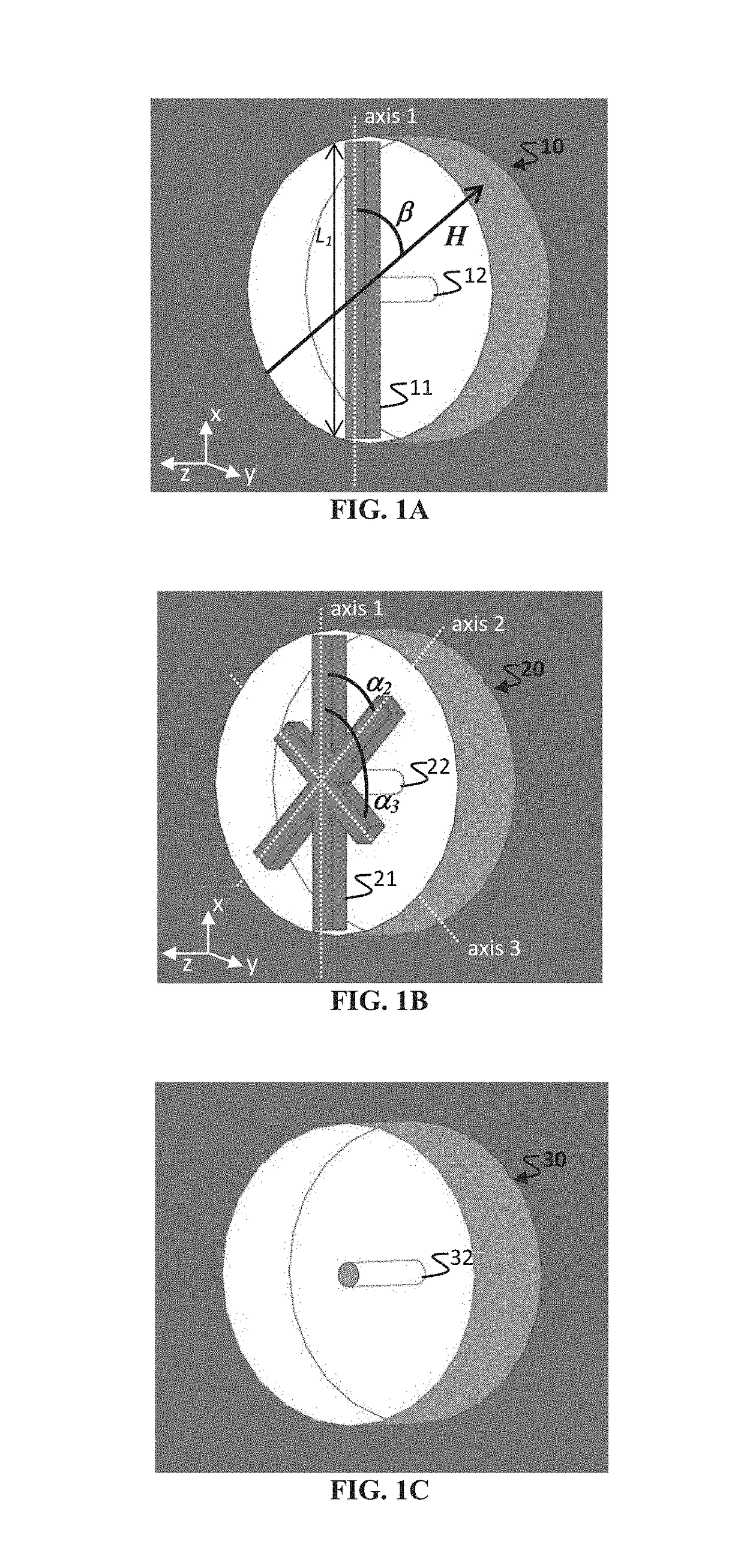Electrodeposition processes for magnetostrictive resonators
a magnetostrictive resonator and electrostatic technology, applied in the field of magnetoelastic resonators, can solve the problems of low anisotropic patterning etching rate, low deposition rate, and low degree of intrinsic material stress of sputtering, and achieve the effect of high potential impa
- Summary
- Abstract
- Description
- Claims
- Application Information
AI Technical Summary
Benefits of technology
Problems solved by technology
Method used
Image
Examples
example 1
Magnetoelastic Smart Sensors for Pressure, Temperature, and pH Detection
[0162]We propose the development of wireless, zero power, radiation hard magnetoelastic or magnetostrictive resonant smart sensors that can detect variations in temperature, pressure and pH as well as provide information for identification and authentication of the article in question, i.e., “smart.” These smart sensors can convey frequency information remotely by near field magnetic interrogation, as opposed to RF. The detected frequency is directly dependent on resonator geometry. Our proposed solution is to employ patterned electrochemical deposition (ECD) of cobalt iron (CoFe) alloy films that have demonstrated giant magnetostriction, i.e., a large change in material shape while under the influence of an applied magnetic field, through other deposition means. Sputter deposited CoFe has demonstrated giant magnetostriction, i.e., a large change in material shape while under the influence of an applied magnetic...
example 2
Electrodeposition Process for CoFe Magnetostrictive Resonators
[0171]We have developed a stable chemistry and process to electrodeposit an alloy film of cobalt and iron (CoxFey) for use as a smart tag and sensor. Various strategies were employed to develop the chemistry (e.g., chemical reagents and composition of the plating bath) and deposition process (e.g., plating condition) that provided a film with a 70-80 atomic % (at. %) cobalt stoichiometry, which was optimal for magnetostrictive properties. Furthermore, these strategies minimized the inclusion of oxygen, controlled the phase of the alloy to improve the magnetostrictive properties, and increased the signal amplitude for magnetic resonance response.
[0172]Regarding the chemistry development, we chose particular chemical reagents and additives to control film properties. First, we selected cation sources and concentrations to achieve the desired stoichiometries and speciation. Second, we included oxygen scavengers to prevent th...
example 3
Magnetic Characterization of CoFe Magnetorestrictive Films
[0192]The CoxFey films were prepared, as described in Example 2, and characterized, as described below. Films were either deposited with pulsed current (“Pulsed”) or direct current (“DC”). Reagents included iron tetrafluoroborate (“IT”) or ammonium ferrous sulfate (“AFS”) as the iron source, as described above in Example 2. Magnetization curves were obtained via SQUID for various samples (Table 1).
[0193]
TABLE 1Magnetization curvesMsat.CoercivityNo.Sample(A / m × 106)(A / m)ControlMetglas ® 2605SA11.078131Co67Fe33 (DC, IT)0.193139302Co68.2Fe31.8 (DC, IT)0.152122103Co80.8Fe19.2 (Pulsed, IT)0.89328934Co64.9Fe35.1 (Pulsed, AB)2.054685Co77Fe23 (DC, AFS)2.0023776Co80.6Fe19.4 (Pulsed, AFS)1.612884* For the CoxFey films, stoichiometric ratios x:y are provided as subscripts.
[0194]As seen in Table 1, electroplated samples employing ammonium ferrous sulfate (AFS) possessed higher magnetization values Msat. In particular, samples 4-6 possess...
PUM
| Property | Measurement | Unit |
|---|---|---|
| current density | aaaaa | aaaaa |
| current density | aaaaa | aaaaa |
| length | aaaaa | aaaaa |
Abstract
Description
Claims
Application Information
 Login to View More
Login to View More - R&D
- Intellectual Property
- Life Sciences
- Materials
- Tech Scout
- Unparalleled Data Quality
- Higher Quality Content
- 60% Fewer Hallucinations
Browse by: Latest US Patents, China's latest patents, Technical Efficacy Thesaurus, Application Domain, Technology Topic, Popular Technical Reports.
© 2025 PatSnap. All rights reserved.Legal|Privacy policy|Modern Slavery Act Transparency Statement|Sitemap|About US| Contact US: help@patsnap.com



